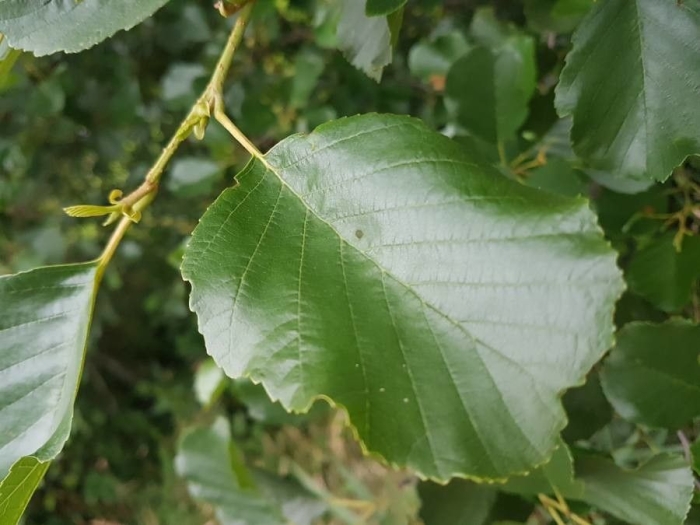Common Alder
(Alnus glutinosa)
Common Alder (Alnus glutinosa)
/
/

Mariken Lorie
CC BY-SA 4.0













































































Estimated Native Range
Summary
The common alder is valued for its ability to thrive in wet conditions and improve soil quality through its symbiotic relationship with the nitrogen-fixing bacterium Frankia alni. It is often used in reforestation projects, for stabilizing riverbanks, and in wetland creation. Its wood is also used for various purposes, including the production of clogs, wood pulp, and charcoal. In cultivation, it is adaptable but prefers full sun to part shade and medium to wet soils with good drainage. The cultivar ’Imperialis’ has decorative, deeply cut leaves and has been awarded the Royal Horticultural Society’s Award of Garden Merit. However, Alnus glutinosa can be invasive outside its native range and may outcompete local species.CC BY-SA 4.0
Plant Description
- Plant Type: Tree
- Height: 40-50 feet
- Width: 20-40 feet
- Growth Rate: Rapid
- Flower Color: N/A
- Flowering Season: Spring
- Leaf Retention: Deciduous
Growth Requirements
- Sun: Full Sun, Part Shade
- Water: Medium
- Drainage: Medium, Fast
Common Uses
Bee Garden, Bird Garden, Butterfly Garden, Erosion Control, Low Maintenance, Rabbit Resistant, Salt Tolerant, Street Planting, Water Garden
Natural Habitat
Riparian zones, wetlands, and moist, fertile soils across Europe, southwest Asia, and northern Africa
Other Names
Common Names: Black Alder, Alder, European Black Alder, European Alder, Swartels, Rød-El, Schwarzerle, Schwarz-Erle, Tervaleppä, Aulne Glutineux
Scientific Names: , Alnus glutinosa, Alnus imperialis, Betula alnus subsp. glutinosa, Alnus glutinosa var. laciniata, Alnus glutinosa f. quercifolia, Alnus glutinosa f. imperialis, Alnus glutinosa f. laciniata, Alnus glutinosa f. rubrinervia, Alnus glutinosa f. incisa
GBIF Accepted Name: Alnus glutinosa (L.) Gaertn.